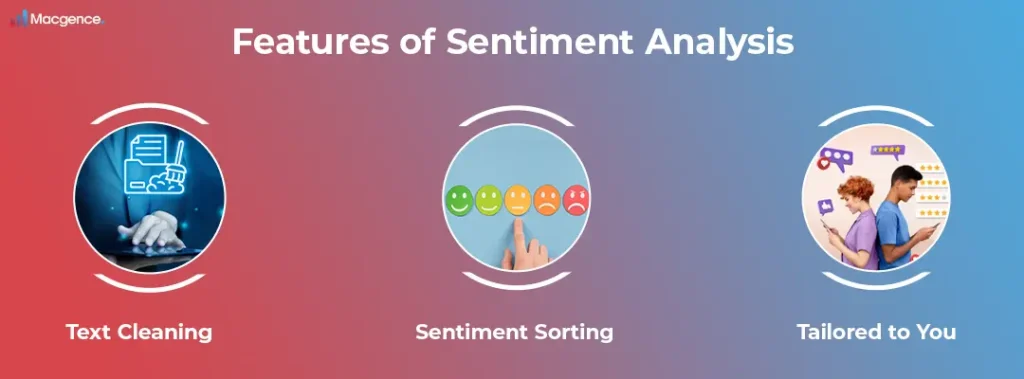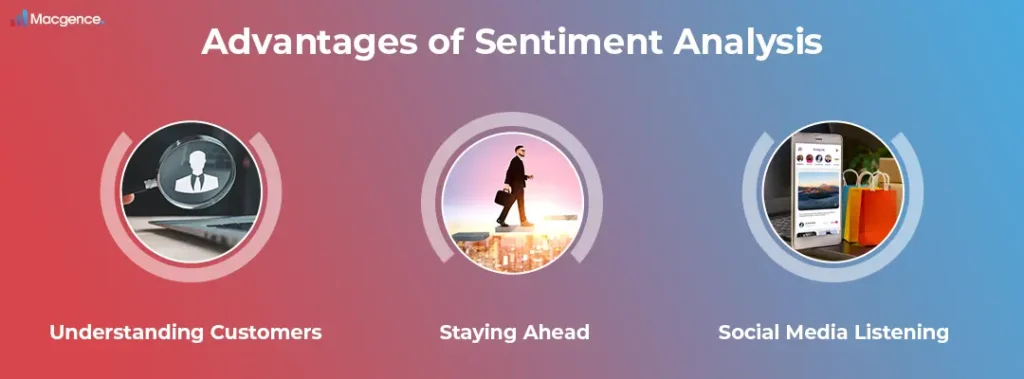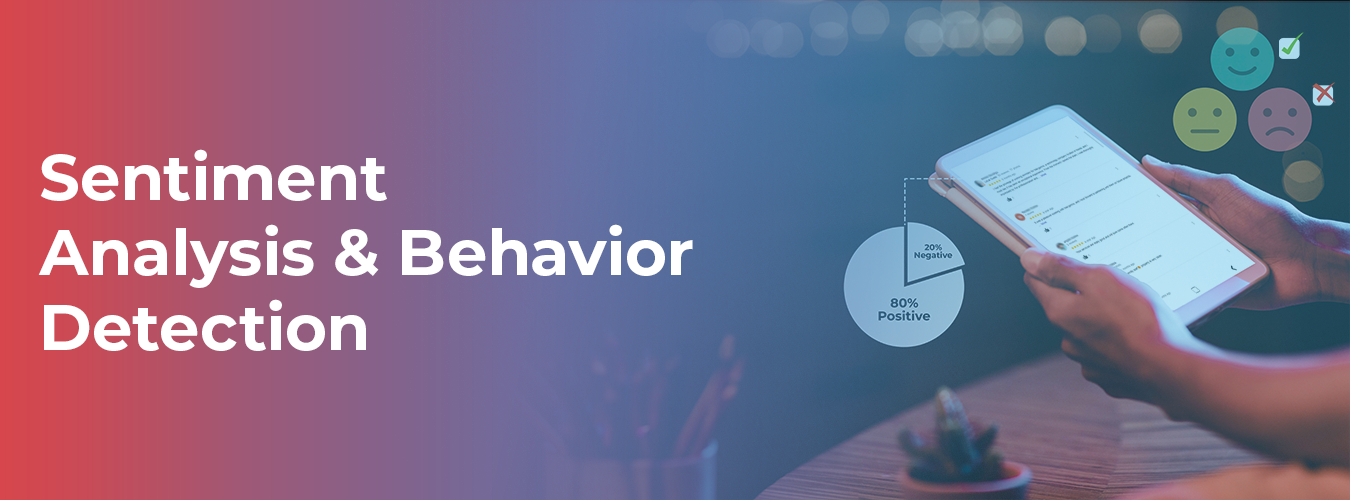Ever wondered how companies know what people really think about their products or services in the vast sea of online chatter? Let’s find out what sentiment analysis services together!
Sentiment analysis services are like smart tools that read through written stuff, like comments or reviews, and figure out if people are feeling positive, negative, or neutral about something. They use fancy computer tricks to understand the language and give a summary of whether people like something or not.
How does Sentiment analysis services work?
Sentiment analysis services use complex computer programs and language processing methods to analyze text and figure out the emotions behind it. Here’s a simple breakdown of how they do it: They use smart algorithms and language understanding techniques to read through text and decide if it’s positive, negative, or neutral.
- Text Preprocessing: The first step involves preprocessing the text to clean and prepare it for analysis. This may include removing punctuation, stop words, and irrelevant characters, as well as tokenization (splitting the text into individual words or tokens).
- Feature Extraction: Sentiment analysis algorithms then extract features from the preprocessed text. These features may include word frequency, n-grams (sequences of adjacent words), or semantic features that capture the meaning of words and phrases.
- Sentiment Classification: Once the features are extracted, the sentiment analysis model classifies the text into predefined categories, such as positive, negative, or neutral. This classification is typically performed using machine learning algorithms, such as support vector machines (SVM), logistic regression, or deep learning models like recurrent neural networks (RNNs) or convolutional neural networks (CNNs).
- Training and Testing: Before deployment, the sentiment analysis model is trained on a labeled dataset containing examples of text with their corresponding sentiment labels. During training, the model learns to recognize patterns and associations between the extracted features and the sentiment labels. After training, the model is evaluated on a separate test dataset to assess its performance and ensure its accuracy.
- Deployment and Real-Time Analysis: Once trained and tested, the sentiment analysis model is deployed to analyze new text data in real-time. Businesses and organizations can integrate sentiment analysis services into their applications, websites, or social media monitoring tools to automatically analyze customer feedback, reviews, social media posts, or any other textual data.
- Sentiment Output: Finally, the sentiment analysis service provides an output indicating the sentiment expressed within the analyzed text. This output may include sentiment scores (e.g., a numerical score representing the intensity of positive or negative sentiment), sentiment labels (e.g., “positive,” “negative,” “neutral”), or sentiment trends over time.
Overall, sentiment analysis services enable businesses to gain valuable insights into customer opinions, market trends, and brand reputation by automatically analyzing large volumes of text data and extracting sentiment-related information in a timely and efficient manner.
Features:

- Text Cleaning: Sentiment analysis services tidy up text data by removing unnecessary stuff like punctuation and unimportant words. This helps make the analysis more accurate.
- Sentiment Sorting: These services use smart techniques to figure out if text is positive, negative, or neutral based on how it’s written.
- Tailored to You: Companies can tweak sentiment analysis tools to fit their specific needs, which makes them more accurate and useful.
Advantages:

- Understanding Customers: Get to know your customers better by understanding what they like, what they don’t, and how they behave. This helps you make smarter decisions and improve your products.
- Staying Ahead: Stay ahead of the game by spotting new trends, knowing what your competitors are up to, and understanding what customers want.
- Social Media Listening: Listen in on social media conversations to see how people feel about your brand. This helps you tweak your marketing efforts and make sure your brand’s message is on point.
Future of sentiment analysis services
In the future, sentiment analysis services will get even better at understanding how customers feel. With advancements in technology like machine learning and natural language processing, they’ll become more accurate at recognizing emotions in text. They’ll also be able to analyze different types of data, like images and videos, to understand sentiment more deeply. This means businesses will get more personalized insights tailored to their industry, helping them make smarter decisions. With the ability to analyze sentiment in real-time, companies can quickly adapt to changing trends. Plus, there will be a stronger focus on using data responsibly and ethically. Overall, sentiment analysis services will change the way businesses connect with their customers online.
Get started on sentiment analysis services with Macgence
Embarking on your sentiment analysis journey with Macgence ensures a professional and tailored approach from inception to implementation. Our experienced team is here to help businesses understand sentiment analysis services better. We carefully match our solutions to your specific needs and industry standards.
With a strong commitment to delivering high-quality results, we offer expert advice on choosing the best tools and technologies. This empowers you to gain useful insights from customer sentiments and make informed decisions with confidence. By relying on our expertise, you’ll be well-prepared to navigate this journey successfully and drive long-term business growth. Get in touch with us today to take your sentiment analysis efforts to the next level of professionalism and effectiveness.
FAQs
Ans: – Sentiment analysis services first started in the early 2000s when researchers began using computers to figure out how people felt from what they wrote online. As technology improved, sentiment analysis tools got better too, helping businesses keep an eye on what customers were saying and manage their reputation well.
Ans: – Sentiment analysis services use advanced computer programs and techniques to understand the emotions behind written text. Here’s how it works: first, the text is cleaned up to remove any unnecessary stuff and get it ready for analysis. Then, important language features are picked out to help figure out the sentiment. This helps businesses understand customer opinions and spot trends in the market.
Ans: – Sentiment analysis services are essentially like smart tools that businesses use to understand what people are saying about their products or services online. They comb through tons of written content, like customer reviews and social media posts, to give valuable insights into customer opinions, market trends, and brand reputation. In simple terms, using sentiment analysis services helps businesses operate more efficiently, grow faster, and stay ahead of the curve in today’s fast-paced market.




